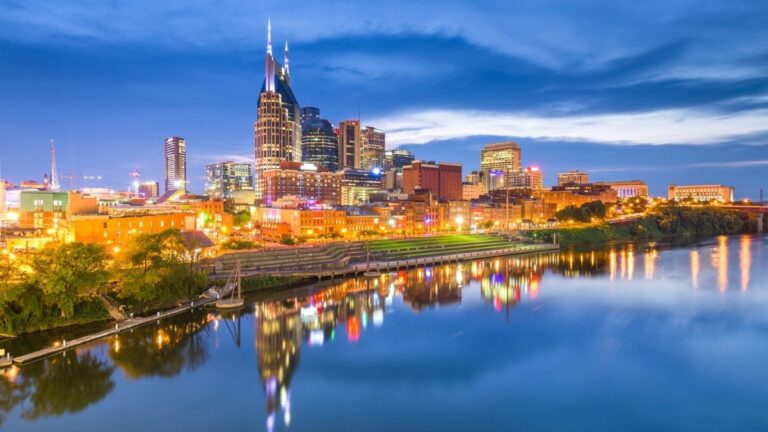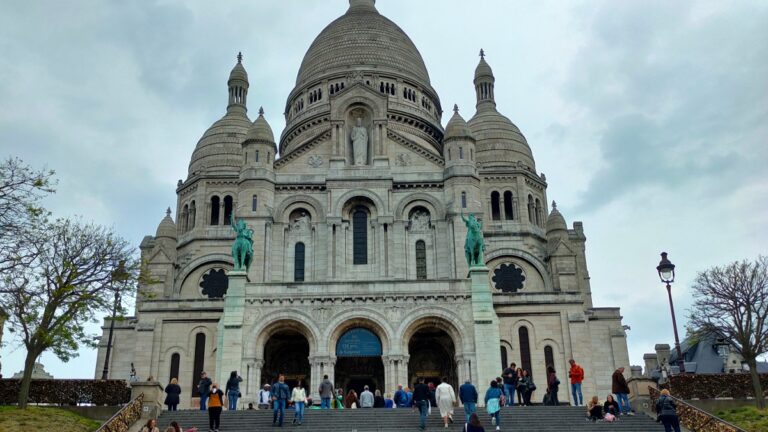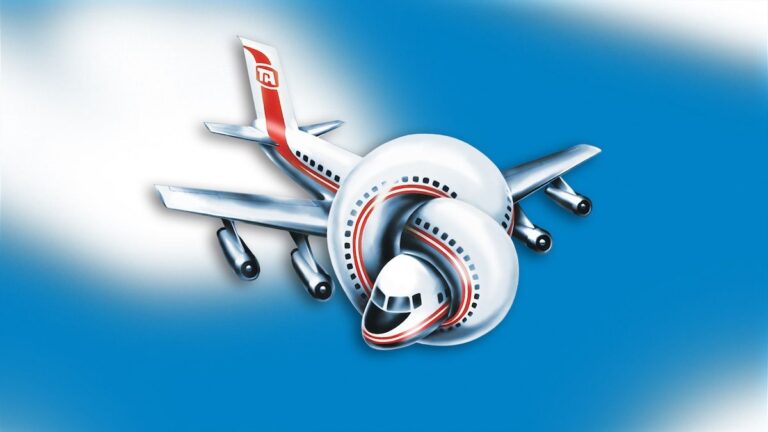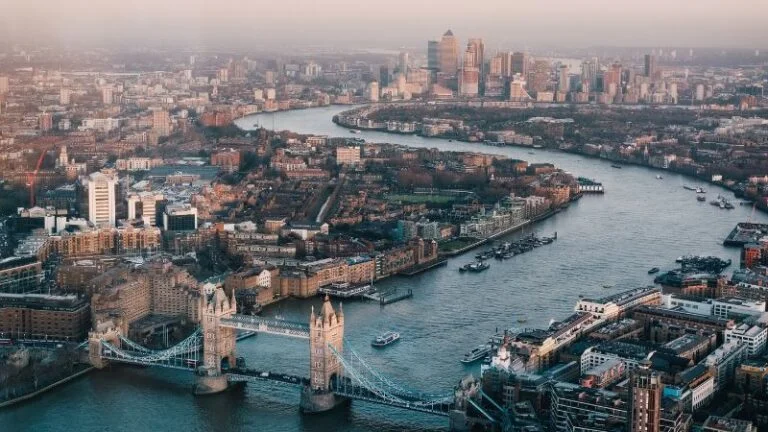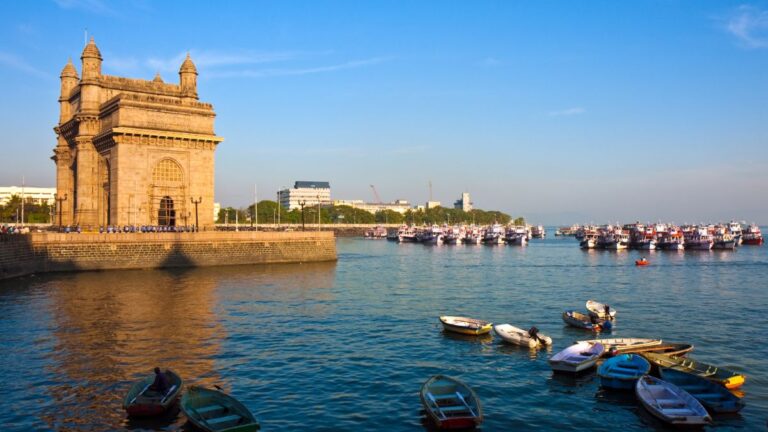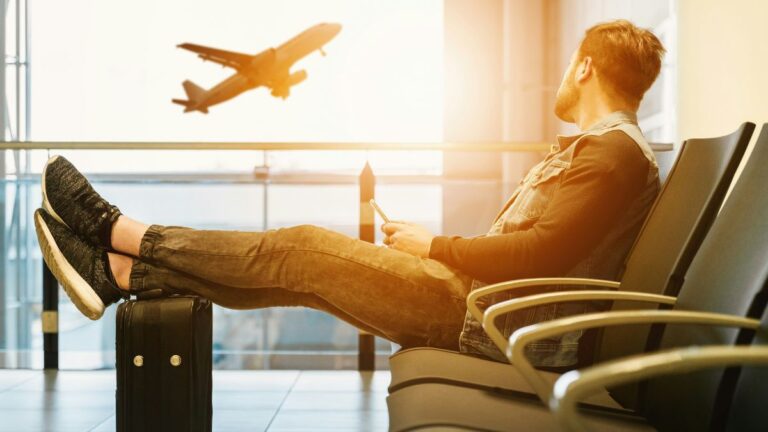What is the Average Duration of Honeymoon Trips

As participants in Amazon Associates and other programs, we earn from qualifying purchases. This comes at no additional cost to you. For more details, see our Affiliate Disclosure.
When it comes to marking the beginning of marital bliss, honeymoons offer couples a chance to unwind, celebrate, and set the tone for their journey together. As you embark on this new chapter, you might find yourself wondering, how long do most couples venture away for their honeymoon? Dive into this article to discover the average duration of honeymoon trips and the factors that influence it.
HIGHLIGHTS
- The average honeymoon duration is around 7 days, with those traveling overseas averaging 9-10 days.
- The rise of remote work has influenced honeymoon planning, allowing couples to integrate work and leisure, leading to extended honeymoons in diverse destinations.
- “Mega-moons” and “duo-moons” are emerging trends, with the former focusing on bucket-list destinations for longer periods, and the latter involving a short break post-wedding followed by a longer trip later.
Understanding the Typical Honeymoon Duration
The honeymoon period is a special phase that marks the commencement of a couple’s life together after tying the knot. It’s a time to celebrate love, create memories, and establish the first of many shared experiences. But how long does this sweet escape typically last?
For the majority of couples, statistics suggest that an average honeymoon spans about 7 days. This is a golden mean, offering ample time to relax and rejuvenate, while also ensuring that the trip is manageable in terms of both time and budget.
However, the duration can vary based on numerous factors. Those looking to travel overseas often extend their stay to 9-10 days to make the most of their international trip. On the other hand, some couples opt for a more extended period of two weeks or more, while others prefer short, intimate breaks that range from 3-5 days.
It’s interesting to note that while there is an “average” honeymoon length, there truly is no “one size fits all.” The duration of a honeymoon trip depends on the couple’s preferences, commitments, budget, and the destination’s offerings.
Factors Influencing Honeymoon Length
While the magic of a honeymoon lies in the experiences shared and memories created, the duration of this special getaway isn’t purely a matter of personal preference. Several factors converge to influence how long couples choose to spend on their honeymoon. Here’s a closer look at some of the most prominent factors that shape this decision:
- Budget Constraints: Perhaps the most apparent factor, the amount of money a couple is willing or able to spend will directly influence the length of their trip. A luxurious destination might entail a shorter stay, while budget-friendly locations might allow for a longer visit.
- Work Commitments: With careers and job responsibilities looming large in many people’s lives, the ability to take extended time off can be a limiting factor. Some couples might have to squeeze in their honeymoon between important work commitments.
- Destination Choice: The selected honeymoon spot plays a crucial role. A nearby destination might mean a shorter trip, whereas a location further away could require a more extended stay to make the most of the travel time and costs involved.
- Cultural Considerations: In some cultures, long honeymoons are traditional, with couples taking several weeks or even months off. In others, shorter and more frequent trips might be the norm.
- Previous Travel Experiences: Couples who are seasoned travelers might opt for longer explorations, while those who are new to traveling together might choose a shorter initial experience.
- Activities and Interests: The kind of activities a destination offers will also influence the length. Adventure-filled destinations with a plethora of activities might see couples staying longer, while tranquil, more laid-back locations might be suited for shorter, more relaxing stays.
- Health and Comfort: Some might need shorter trips due to health reasons or personal comfort, especially if the destination involves challenging terrains or climates.
- Time of the Year: Depending on whether it’s peak season, off-season, or shoulder season, couples might adjust their honeymoon length to either avoid crowds or make the most of lower prices.
- Family Commitments: For some, familial responsibilities or events might dictate the duration they can be away.
- Recent Trends: As seen in the post-pandemic world, external factors and global events can also influence honeymooning patterns and durations.
While the dream of a perfect honeymoon is universal, its length and nature are shaped by a mix of personal choices and external circumstances. Every couple’s honeymoon journey is unique, tailored to their narrative, and influenced by an array of factors.
The Rise of Mega-Moons: Longer and Lavish Getaways
The term “honeymoon” has evolved over the years, and with it, the trends and preferences of newlyweds. Enter the era of “mega-moons” – a fresh take on the traditional honeymoon that speaks of grandeur, extended durations, and once-in-a-lifetime experiences. But what exactly are mega-moons, and why are they gaining such traction? Let’s dive in.
Defining Mega-Moons: Mega-moons are extended honeymoons that often last for several weeks, if not months. They are characterized by their luxurious undertones, bucket-list destinations, and the pursuit of experiences that stand out from the ordinary.
Bucket-List Destinations: These honeymoons often involve travel to exotic, far-flung places that couples have dreamt of visiting for years. Think of locations like the Maldives, Dubai, or perhaps a picturesque journey through Europe’s countryside.
Experience Over Duration: The ethos of a mega-moon isn’t just about length but also about the richness of the experience. It’s about immersing oneself in the local culture, indulging in world-class luxury, and creating memories that last a lifetime.
A Response to Modern-Day Stress: As life gets busier and the boundaries between work and leisure blur, mega-moons offer couples an extended break from the daily grind, a true escape to reconnect and start their marital journey on a lavish note.
Financial Evolution: With couples marrying later in life and often in a more stable financial position, there’s a willingness and ability to splurge on this significant life event.
Jet-setting Considerations: Given the exotic destinations involved, a significant portion of the trip might be spent traveling. Hence, to truly enjoy and explore the destination, longer stays become a necessity. Additionally, the jet lag associated with such long-haul flights necessitates a longer duration to relax and recuperate.
Planning for a Mega-Moon: While the idea is opulent, it requires meticulous planning. From visa arrangements to budgeting and from itinerary planning to ensuring no work commitments are hampered, mega-moons demand attention to detail.
Environmental Considerations: As these trips often involve long flights and extended stays in luxury resorts, they can have a considerable carbon footprint. Couples are now often integrating sustainable practices into their mega-moons, like opting for eco-friendly resorts or offsetting their carbon emissions.
Mega-moons embody the idea that if the honeymoon is a celebration of love and partnership, why not make it the grandest celebration of all? They might not be for everyone, but for those who choose this path, it promises an unforgettable journey brimming with luxury, adventure, and memories galore.
Duo-Moons: Two Getaways Are Better Than One!
In the ever-evolving landscape of post-wedding travel, a new trend has emerged, offering couples the best of both worlds: the duo-moon. This unique concept breaks away from the tradition of a single honeymoon trip, allowing couples to indulge in two separate getaways. Let’s delve into the allure of duo-moons and explore why many modern couples are gravitating towards this dual escape.
What is a Duo-Moon?: A duo-moon consists of two distinct trips. The first, known as the “mini-moon,” is a shorter getaway taken immediately after the wedding. The second is a longer, more elaborate vacation taken at a later date.
The Appeal of the Mini-Moon: Often a weekend escape or a few days’ retreat, mini-moons offer couples a quick breather post-wedding chaos. It’s a chance to relax, rejuvenate, and relish the immediate post-wedding glow without the pressure of a lengthy expedition.
Saving the Best for Later: The main honeymoon, planned for later, gives couples something additional to look forward to. This extended break allows for in-depth exploration, often in far-off or dream destinations.
Flexibility and Practicality: Duo-moons cater to couples with tight schedules or work commitments. By splitting the honeymoon, they can make the most of their immediate free time post-wedding and then plan a longer break when it’s more feasible.
Financial Advantages: Spreading out the expenses of two trips can be more manageable for some couples, allowing them to budget separately for each getaway. It also provides more time to save for the more lavish main honeymoon.
Diverse Experiences: Duo-moons offer couples the opportunity to experience two different kinds of vacations. They might choose a local, relaxed mini-moon followed by an adventurous or exotic main honeymoon, giving them a blend of experiences.
Overcoming Travel Restrictions: In a world where travel advisories and restrictions have become commonplace due to global events like pandemics, duo-moons can be a strategic choice. A local mini-moon can be enjoyed immediately, with hopes of international borders opening up for the later, main honeymoon.
Making Memories Over Time: By splitting their post-wedding travels, couples get to relish and absorb the memories from one trip before diving into another. It’s a way to prolong the honeymoon phase and keep the celebratory spirit alive.
Duo-moons champion the idea that love and marital celebrations don’t have to be confined to a single timeframe or destination. With the promise of two unique getaways, duo-moons are redefining post-wedding travel, making it more flexible, diverse, and aligned with the needs of contemporary couples.
The Era of Extended Honeymoons: Traveling for Months
The classic notion of a honeymoon—whisking away to a romantic destination for a week or so—is undergoing a transformation. As the world becomes more interconnected and remote work rises in popularity, an audacious trend has emerged: the extended honeymoon.
This isn’t just a few weeks away but months, sometimes even years, of traveling together as a newlywed couple. Let’s explore the intricacies of this burgeoning trend and why more couples are opting for prolonged adventures.
Redefining Honeymoons: Extended honeymoons push the boundaries of what post-wedding getaways can look like. Rather than a short escape, they’re immersive experiences, allowing couples to deeply explore cultures, landscapes, and each other.
Empowered by Remote Work: The surge in remote work and the digital nomad lifestyle has been a game-changer. Many couples can now maintain their careers while exploring the globe, making long-term travel more feasible.
Depth Over Surface: Extended honeymoons favor depth over superficial experiences. Instead of a whirlwind tour of a country, couples have the time to live in different cities, understand local cultures, and even pick up new languages.
Financially Savvy Travel: Contrary to what one might assume, traveling for extended periods can sometimes be cost-effective. Long-term stays often come with discounts, and living like a local can be cheaper than a touristy approach.
Strengthening Bonds: Spending months together in unfamiliar terrains can strengthen a couple’s bond. They rely on each other, face challenges together, and share countless new experiences, laying a strong foundation for their marriage.
An Opportunity for Personal Growth: Such prolonged trips aren’t just about exploring the world but also about self-discovery. Couples often return with a broader perspective, enriched by diverse experiences.
Planning and Preparation: Extended honeymoons require meticulous planning. From budgeting to understanding visa regulations and ensuring they have the tools for remote work, couples must be prepared for a journey of this magnitude.
Health, Safety, and Well-being: Longer trips demand a keen focus on health and safety. It’s essential to be aware of healthcare services in visited countries and have a comprehensive insurance plan.
A Sustainable Approach: Extended stays often mean less frequent air travel and a reduced carbon footprint, especially if couples choose eco-friendly accommodations and practices.
The era of extended honeymoons marks a shift from traditional post-wedding vacations to transformative, extended journeys. While they’re not for everyone, for those who embark on such an adventure, it promises unparalleled experiences, lifelong memories, and a unique start to marital bliss.
World’s Longest Honeymoon
Mike and Anne Howard set out in 2012 on what became the world’s longest honeymoon. Their journey, remarkable in its audacity, lasted for a staggering 2,500 days or approximately 6.8 years.
The Howards didn’t embark on this adventure simply for the thrill. Their genuine love for travel and desire to explore the world as a newly married couple fueled their extended honeymoon.
Their travels took them across seven continents and through over 50 countries. Their experiences ranged from the mesmerizing Northern Lights in Iceland to challenging treks in the Himalayas.
Financing a trip of this duration required financial ingenuity. They became experts in travel hacking, utilizing deals and rewards to make the most of their budget.
The world became privy to their adventures through their travel blog, “HoneyTrek.” Here, they shared stories and tips, inspiring a legion of followers.
Despite the romance of their journey, they faced numerous challenges. From health scares in remote areas to navigating complex geopolitical situations, their resilience was frequently tested.
Upon their return, the couple’s tales were immortalized in a National Geographic book titled “Ultimate Journeys for Two,” offering insights and guidance to other intrepid travelers.
Making the Most of Shoulder Seasons for Longer Stays
Shoulder seasons, the transitional periods between peak and off-peak travel times, offer travelers a unique opportunity to explore popular destinations without the usual crowds or high prices. They represent a sweet spot for those looking to maximize their trip duration and experience without breaking the bank.
During these times, most destinations still retain their charm, with favorable weather conditions that may only be slightly less perfect than the peak season. With fewer tourists around, there’s a greater chance for authentic experiences, more interaction with locals, and an unhurried exploration of attractions.
Accommodations play a crucial role in travel expenses. During shoulder seasons, hotels and vacation rentals often drop their prices, offering deals and discounts to entice travelers. These reduced rates can significantly extend a traveler’s stay, allowing them to indulge in a more relaxed itinerary and immerse deeper into the local culture.
Moreover, airlines might offer discounted fares during these periods. Less demand means better chances of securing cheap tickets, which can free up a portion of the travel budget for other experiences or allow for longer stays.
For food enthusiasts, shoulder seasons provide a fantastic opportunity to indulge in local cuisines at popular restaurants without long waiting times or reservations booked months in advance.
Lastly, the slight dip in tourist numbers means less stress on local environments and infrastructures. By choosing to travel during shoulder seasons, tourists can promote sustainable tourism, helping destinations preserve their natural beauty and charm.
The Impact of Remote Work on Honeymoon Planning
The concept of work has undergone a transformation in the digital age. The rise of remote work, particularly in the aftermath of global events like the pandemic, has altered not only how we work but also how we plan personal milestones, including honeymoons.
Flexibility in Timing: Remote work offers flexibility, eliminating the traditional constraints of having to be back at the office by a certain date. This has enabled couples to plan honeymoons that aren’t limited to a week or two. Some might opt for a month-long getaway or even longer, blending work and leisure without the rush to return.
Choice of Destinations: With the ability to work from almost anywhere, couples are broadening their horizons. Instead of the typical honeymoon spots, they are exploring off-beat destinations, sometimes even choosing quiet, remote locations that offer a good work-life balance.
Extended Honeymoons: As discussed earlier, the phenomenon of extended honeymoons has gained traction. Remote work capabilities play a pivotal role in this. Couples can opt for slow travel, immersing themselves in one destination for a prolonged period, working during the day, and exploring during their free time.
Budget Considerations: While remote work offers the luxury of time, it doesn’t necessarily equate to unlimited funds. However, longer stays often lead to better deals on accommodations, and living in a place (rather than just touring it) can be more cost-effective in many destinations.
Work-Life Integration: For those who choose to work during their honeymoon, it’s essential to strike a balance. Allocating specific hours for work and setting boundaries ensures that work doesn’t overshadow the romantic and exploratory essence of the honeymoon.
Tech Essentials: A working honeymoon requires tech essentials like a reliable laptop, secure internet connections, and tools for communication. Destinations are now being chosen based on their ability to cater to these digital necessities.
Local Networking: For some, the honeymoon becomes a chance to network and explore business opportunities in a new locale. This isn’t the traditional idea of a honeymoon, but it’s an emerging trend, especially among entrepreneurial couples.
In conclusion, remote work has presented couples with a unique opportunity to redefine their honeymoons. The blend of work and leisure, if balanced correctly, allows newlyweds to start their marital journey with adventure, exploration, and even professional growth.

